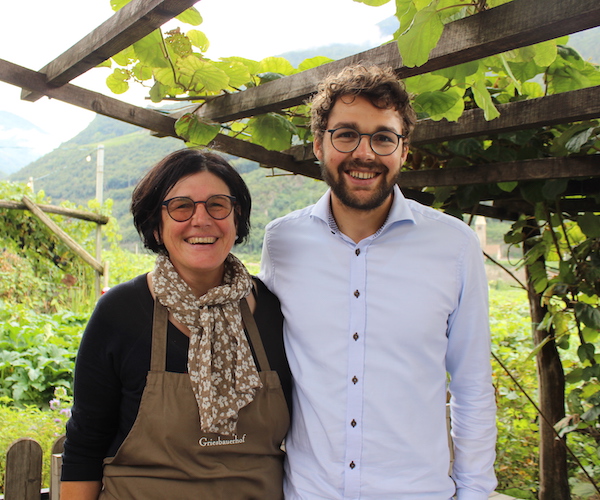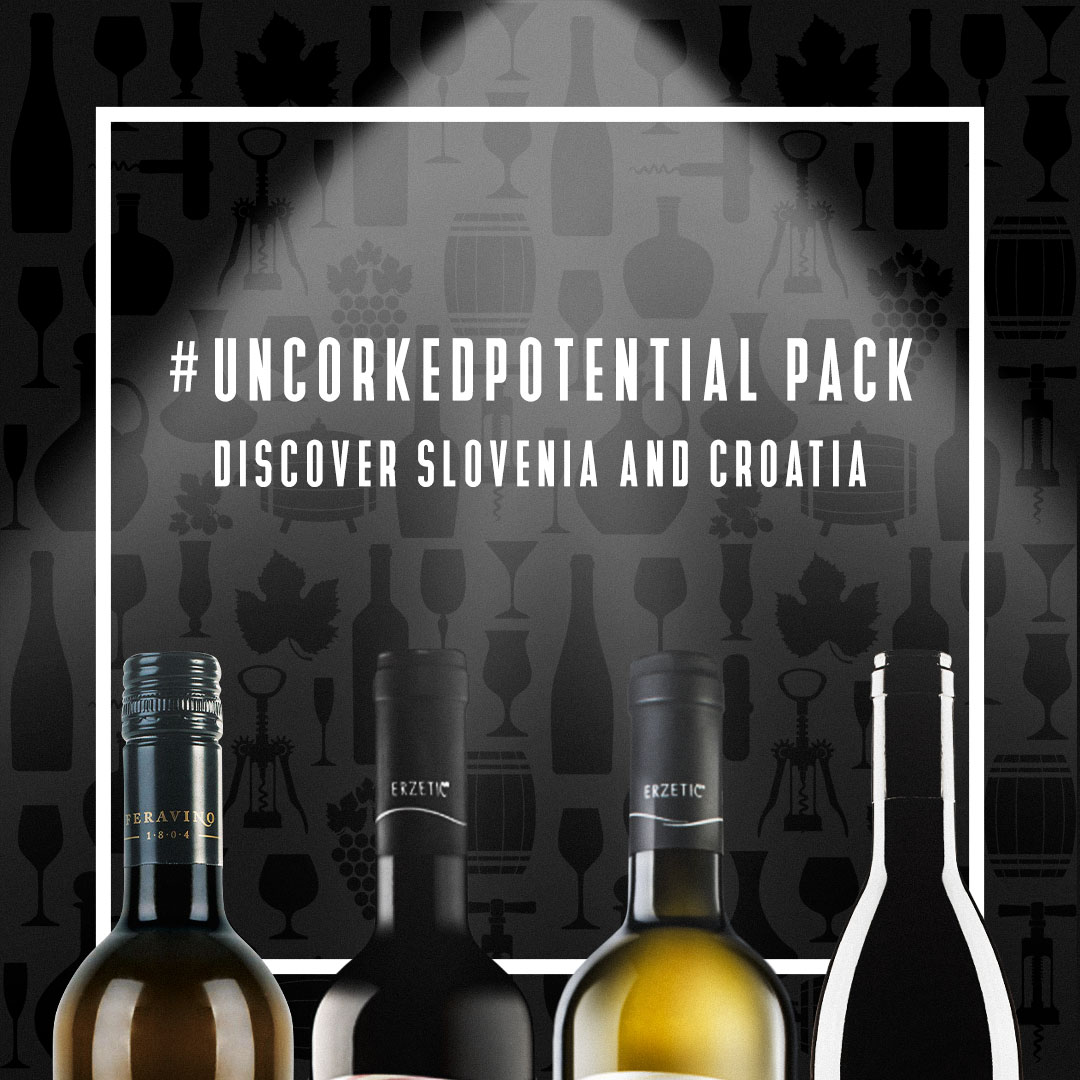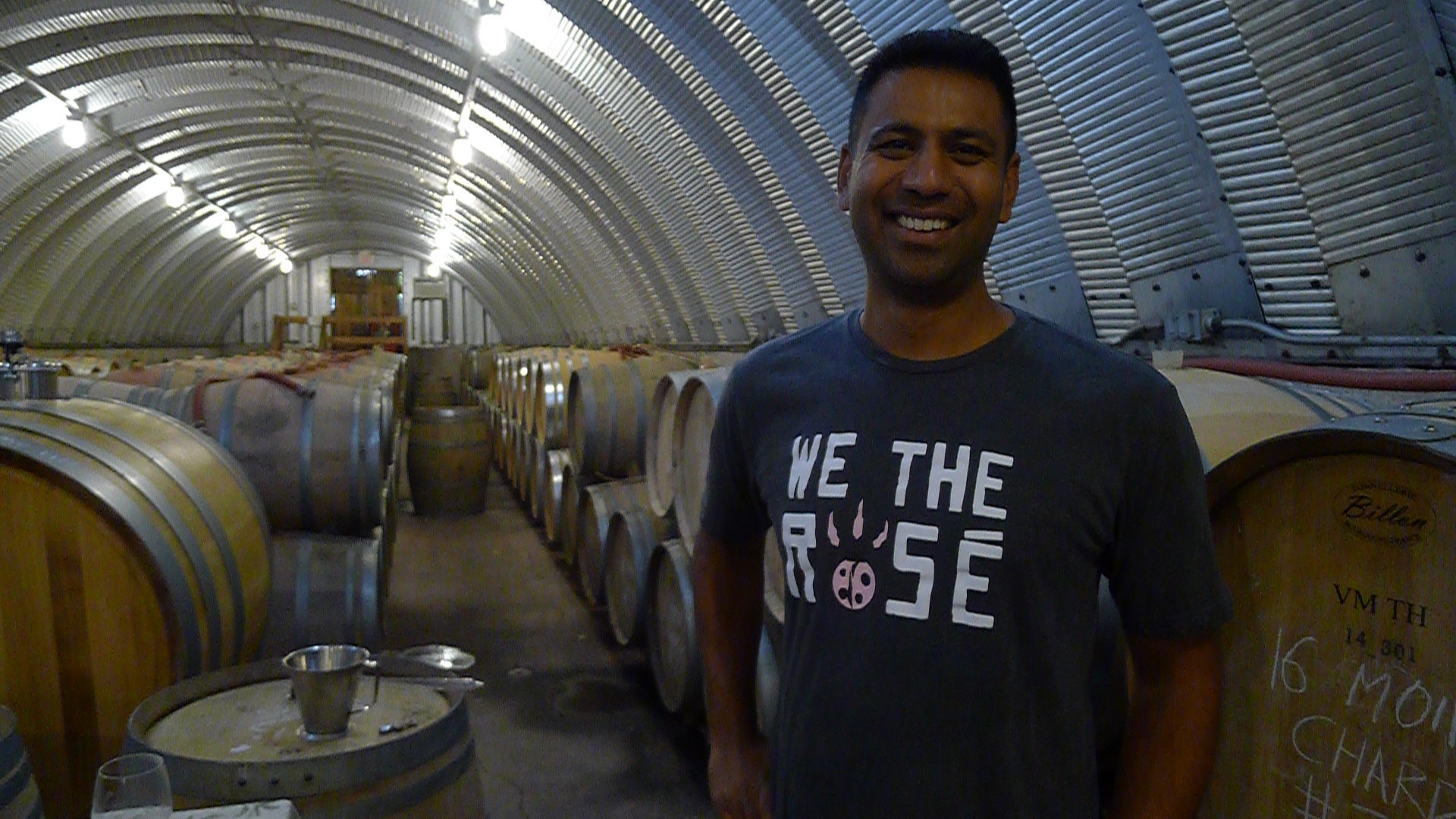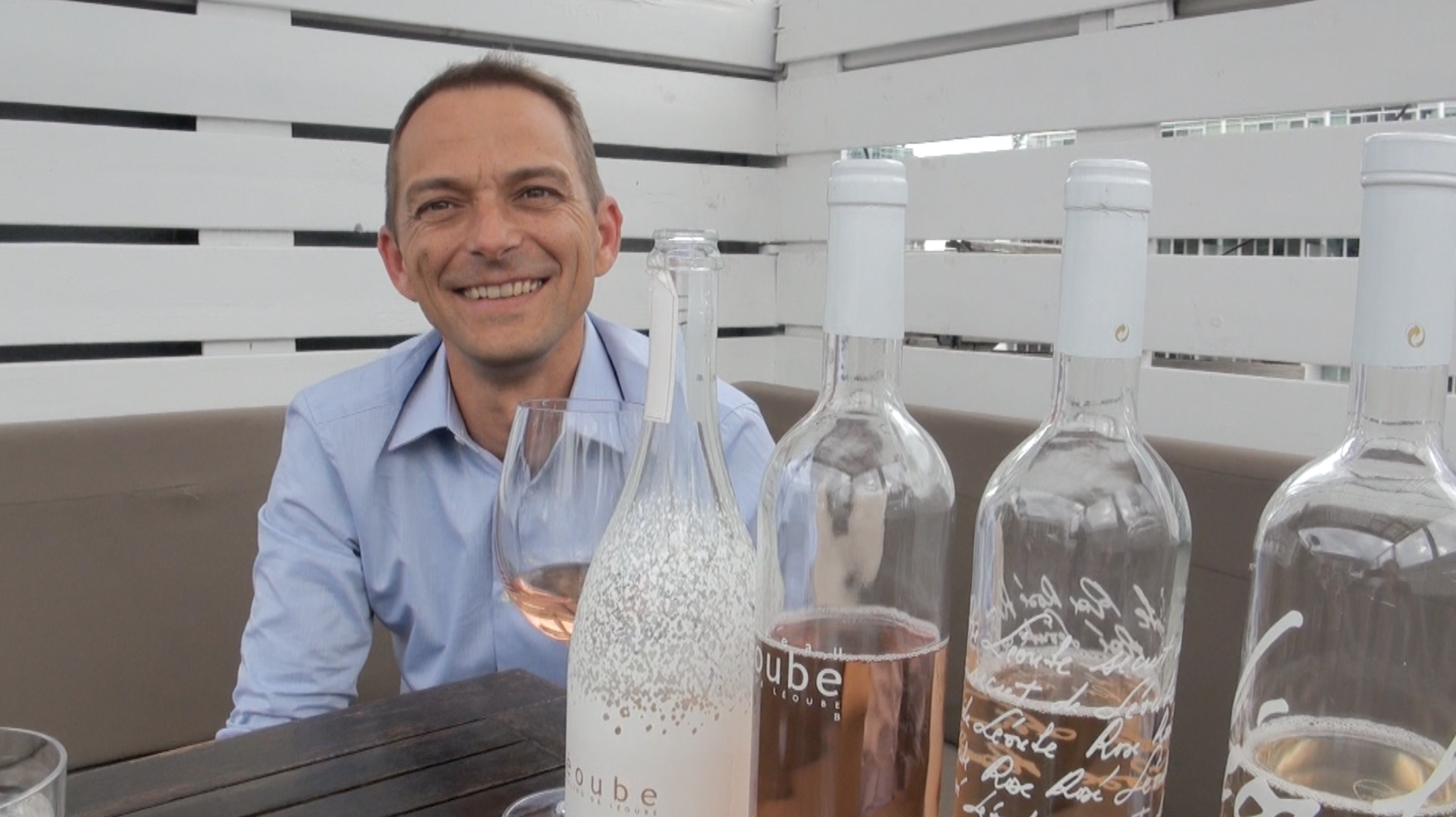Malcolm Jolley tries to figure out the Alto Adige’s indigenous red wine…
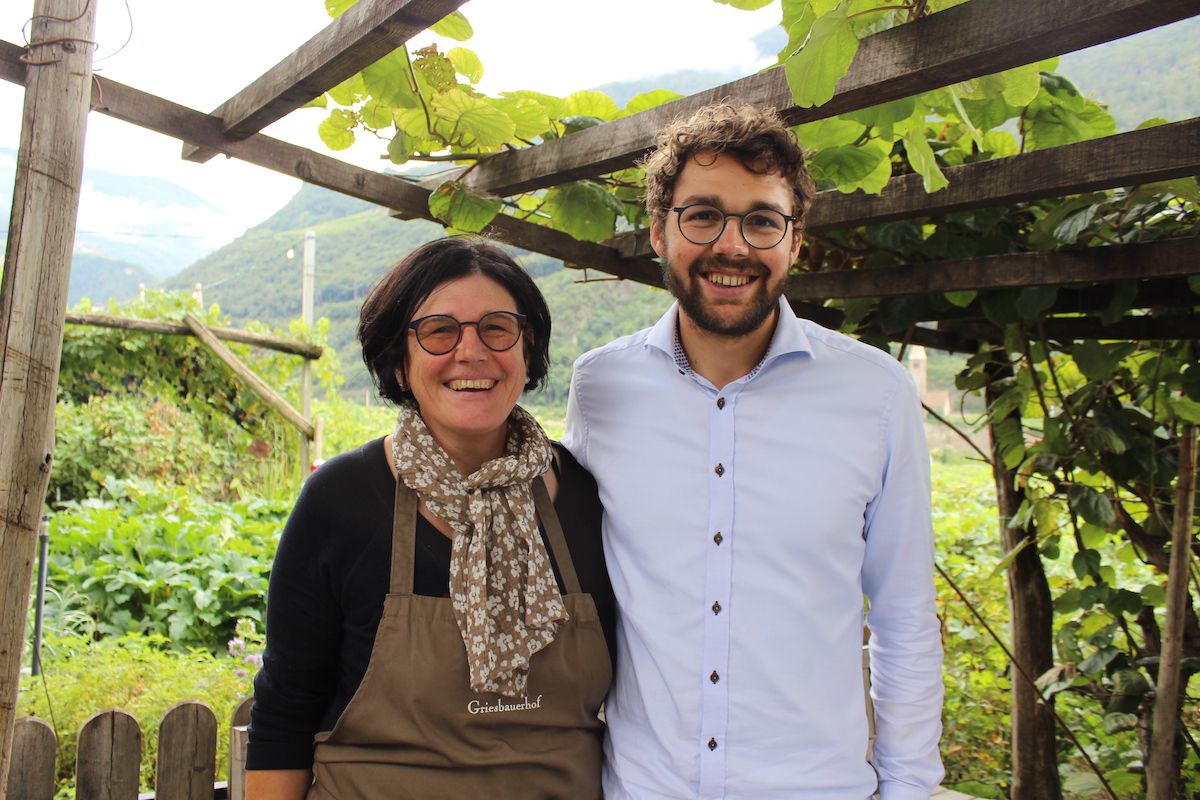
Margareth Mulmeter and her wine making son Lukas at their Bolzano winery Griesbauerhof.
This post follows-up on ‘Lagrein Part One‘…
The trouble with wine writing is that it privileges distinction over commonality. The work largely consists of distinguishing one wine over another. This is a useful exercise for those who wish know the differences between Left Bank first growths, or the villages of Burgundy, but I’m not sure how useful it is for a survey wines made from of a relatively unknown grape within a relatively small area. Or, I’m really just making excuses, because the trouble with my wine writing is my mind, by default, works the in the opposite way. What grabs my attention is the commonality of the wines from a given place, so my notes, when I go back to them after a tasting, can be awfully repetitive. And those with much finer tuned palates than mine can find may more distinctions between wines I often find quite similar. This used to cause me a fair amount anxiety until I realized that my interest and (I hope) my usefulness as a wine journalist lay less in the particularities of a given wine from a given year and more in the general idea about them and how they fit into the larger universe of the wine world. So, it was in this spirit that looked over my notes recently from a tasting of 22 wines made from the Lagrein grape from eight producers in the Alto Adige, or Südtirol.
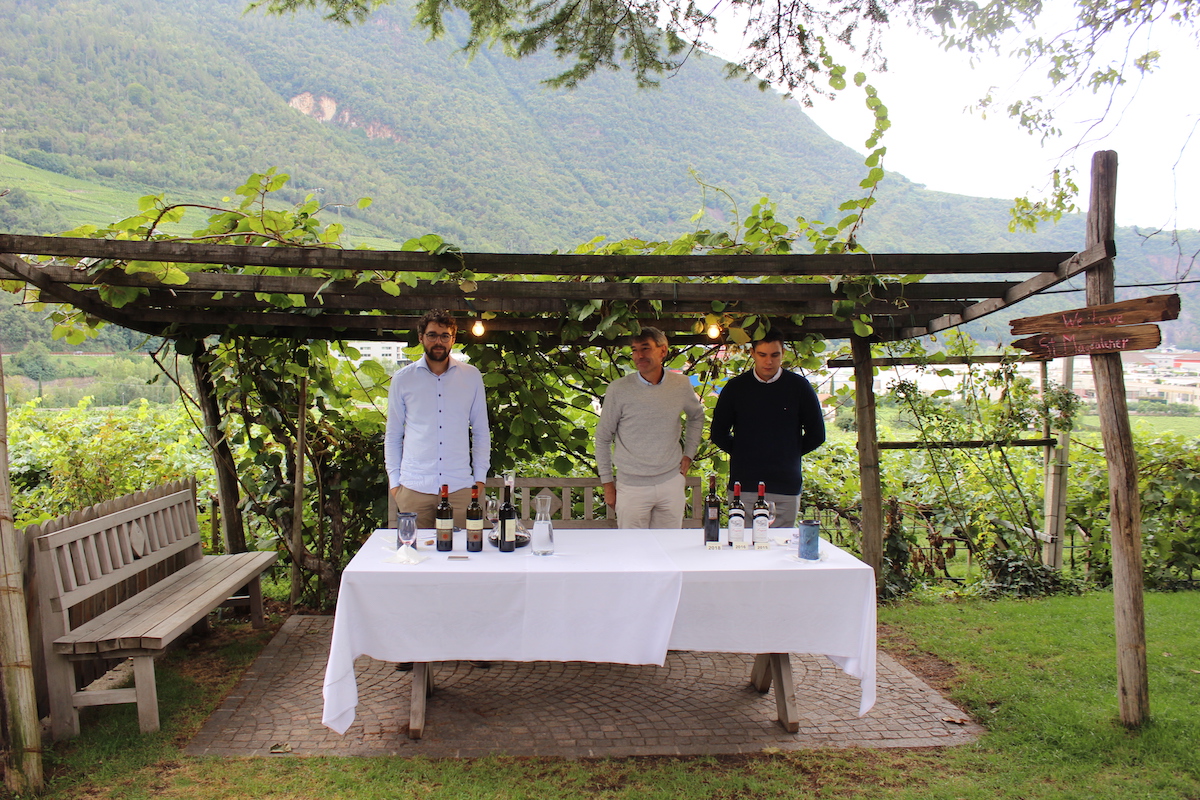
The tasting was outside on the lawn at Weingut Griesbauerhof in the hills overlooking the city of Bolzano, and it was organized by Wein Südtirol / Vini Alto Adige, who hosted me last fall as part of a press trip to attend the region’s Wine Summit. Presenting were Weingut Eberlehof, Weingut Griesbauerhof, Weingut Egger-Ramer, Untermoserhof , Weingut Hans Rottensteiner, Klosterkellerei Muri-Gries, Malojer Gummerhof, and Kellerei Bozen. The wines poured were all single variety Lagrein. The vintages ranged from 2011 to 2018 (a few right from barrel). Every producer poured a 2016, and most also poured a 2017, reflecting what they had in the market. Most of the wines were labelled ‘Riserva’, of which most (at least that I noted) were a selected from a single vineyard. I’m not sure of the Alto-Adige DOC has a specific discipline for ‘Riserva’. If it does, then I presume it involves some kind of oak ageing, as I believe all the Riservas I tasted had an element of oak, to varying degrees. But then, so did some of the non-Riserva. In this sense the Lagrein of the Alto-Adige reflects the conflict one sees in other Italian regions between an “old new wave” of producers who favour new oak and “new traditionalists” who tend to eschew it for a lighter, more fruit forward style. The recent history of Lagrein, as I wrote in my overview of its viticulture here, was as a rosé or kretzer, and there were a couple of those as well, showing bight red fruit. The common thred that bound all of the red Lagrein, whether they were the older smoky 2011’s or the new brith 2017’s, spicy with new oak or not, was the core tension typical of Südtirol wines between black fruit Mediterranean sunshine and red fruit high altitude cool climate. Related to Pinot Noir, Lagrein can often show like Syrah from the Northern Rhône, including a touch of white pepper.

In the end, if you wanted to taste wines made from Lagrein properly, in their natural habitat, then you could do a lot worse than at a table under the pergola trained vines at Weingut Griesbauerhof over a grilled steak and garden vegetable lunch cooked by the winery’s chef Michael Mumelter, which is how the tasting ended. There, our group of journalists and producers passed the bottles to and fro, enjoying the tension between cool Dolomite mountain air and warm Italian sunshine.
Stay tuned for more about specific Lagrein as it comes into the Ontario market…

